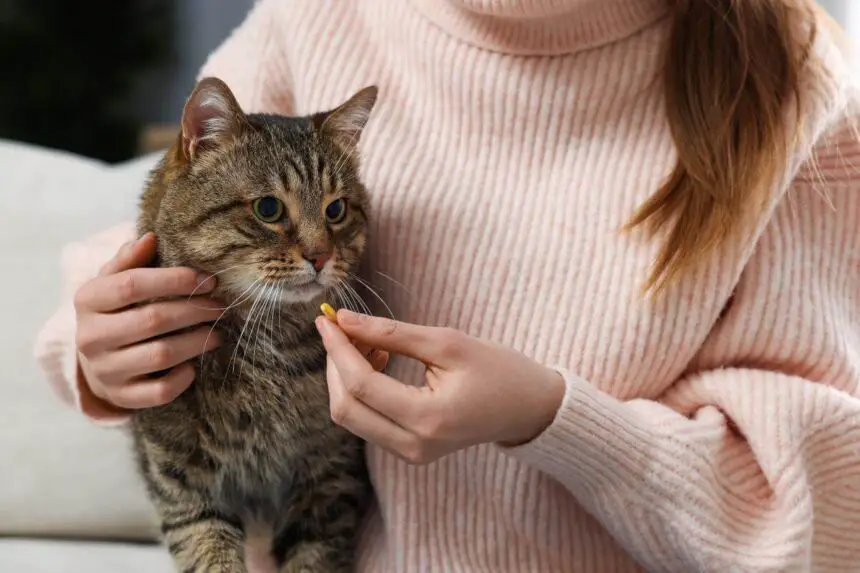Cats are notorious for their finicky eating habits, and it can be particularly challenging when they refuse to eat their prescribed diet. Prescription cat food is specifically formulated to meet the unique nutritional needs of cats with certain health conditions, such as kidney disease, diabetes, or food allergies. However, coaxing a cat to eat prescription food can be a frustrating and concerning experience for pet owners. In this article, we will explore the reasons behind a cat’s refusal to eat prescription food and discuss effective strategies to address this issue.
Understanding the Cat’s Behavior
Before delving into potential solutions, it is important to understand the underlying reasons why a cat might reject prescription food. Cats have a highly developed sense of taste and smell, and any deviation from their usual diet can trigger their natural instincts for food selection. Here are some common factors that may contribute to a cat’s reluctance to eat prescription food:
Taste and Texture Preferences
Prescription diets often have different flavors and textures compared to regular cat food. Cats may have specific preferences developed over time, making it challenging for them to accept new tastes or textures. Additionally, some cats may find the prescribed food unappetizing due to its smell or appearance.
Transition Difficulties
Switching from a familiar diet to a new prescription food can be challenging for cats. Cats are known for their dislike of sudden changes, and a sudden switch may cause them to refuse the new food. Gradual transitions are often recommended to help cats adjust to the new diet.
Medical Issues
Certain medical conditions or medications can affect a cat’s appetite. Cats experiencing pain, nausea, or digestive problems may be less inclined to eat. It is essential to rule out any underlying health issues that may be causing the loss of appetite.
Behavioral Factors
Stress, anxiety, or changes in the cat’s environment can also impact their appetite. Cats are sensitive to changes in their surroundings and routines, and these factors can contribute to their refusal to eat prescription food.
Addressing the Issue
When faced with a cat that refuses to eat prescription food, it is crucial to find a solution that ensures the cat’s nutritional needs are met. Here are some strategies that can help address this challenge:
Consult with the Veterinarian
If your cat consistently refuses to eat prescription food, the first step is to consult with your veterinarian. They can examine your cat, rule out any underlying health issues, and provide guidance based on their expertise. They may also recommend alternative prescription diets or adjustments to the feeding routine.
Gradual Transition
Instead of abruptly introducing the new food, try a gradual transition. Mix a small amount of the prescription food with your cat’s regular food and gradually increase the proportion of prescription food over several days or weeks. This method allows the cat to adjust to the new taste and texture gradually.
Food Temptation
To entice your cat to eat prescription food, you can try enhancing its appeal. Warm the food slightly or add low-sodium chicken or fish broth to enhance the aroma and flavor. Be cautious about adding any additional ingredients without consulting your veterinarian to avoid compromising the prescribed diet.
Feeding Schedule and Environment
Establishing a consistent feeding schedule and creating a calm and quiet feeding environment can encourage your cat to eat. Cats thrive on routine, and a predictable schedule can help reduce stress and anxiety during mealtime.
Food Puzzles and Interactive Feeders
Introducing food puzzles or interactive feeders can engage your cat’s natural hunting instincts and make mealtime more stimulating. These devices can help distract your cat from any aversion to the prescribed food and encourage them to eat.
Medication Administration
If your cat requires medication alongside the prescription food, you can explore different methods of medication administration. Some medications can be compounded into tasty treats or flavored liquids that can be mixed with the food. Consult your veterinarian to determine the best approach for your cat’s specific needs.
Seek Alternative Prescription Diets
In some cases, a cat may simply dislike the taste or texture of a particular prescription food. Talk to your veterinarian about alternative options within the same therapeutic category. There may be different brands or formulations available that your cat may find more palatable.
Wet vs. Dry Food
Consider the consistency of the prescription food you’re offering. Some cats have a preference for either wet or dry food. If you have been offering dry food, try introducing the wet version of the same prescription diet, or vice versa. Experimenting with different consistencies might increase your cat’s interest in the food.
Behavioral Enrichment
Stress and anxiety can significantly affect a cat’s appetite. Provide your cat with environmental enrichment to help alleviate these issues. Provide toys, scratching posts, hiding spots, and vertical spaces to create a stimulating and comfortable environment. A calm and content cat is more likely to eat their prescribed food.
Monitoring and Communication
Throughout the process, closely monitor your cat’s eating habits and communicate regularly with your veterinarian. Keep a record of food intake, any changes in behavior, and overall well-being. This information will assist your veterinarian in assessing the effectiveness of the prescribed diet and making any necessary adjustments.
Conclusion
When a cat refuses to eat prescription food, it can be a frustrating situation for both the pet owner and the veterinarian. However, understanding the reasons behind the cat’s reluctance and employing appropriate strategies can help address the issue effectively. By consulting with your veterinarian, gradually transitioning the food, enhancing its appeal, and creating a positive feeding environment, you can increase the likelihood of your cat accepting the prescribed diet. Remember, patience and persistence are key in successfully managing your cat’s nutrition and overall health.


